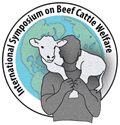A Tool for Managing Mud in the Feedlot
MANHATTAN, Kan. (May 20, 2010) — Terry Mader, beef cattle Extension specialist and professor of animal science at the University of Nebraska (NU), told attendees at the International Symposium on Beef Cattle Welfare May 20 that managing mud in feedlots is really about mitigating the effects of the environment and minimizing the stress those conditions cause in livestock.
Mader explained that there are studies of the performance losses among animals that are stressed by heat, mud, cold and other environmental factors. Using these studies as models, Mader said, can provide information for the study of individual stressors, such as mud, and how feedlot design and management techniques can help animals at least maintain body condition in cold, wet environments.
While important, performance losses are not the sole focus of mitigating the effects of mud in feedlots, Mader emphasized. “Comfort will be highly correlated to performance.”
Mader said snow causes deeper mud than rain. Mitigation assessments can include pen surface properties, meaning the moisture storage capacity of each pen; the moisture infiltration rate of each pen; and the pen maintenance and residue loads. In addition, any assessment must include ground slope; the number of animals in each pen; and a depth determination of water intake, urine output, evaporation rate and environmental parameters.
The drying rate, or the chance for the ground to dry out in between rain or snow events, will help determine the mitigation techniques used. In a feedlot built with some slope in the pens, rain will run off, thus improving the drying rate. The worst conditions, Mader noted, are freezing and thawing patterns with snow, because the ground has no chance to dry before it freezes again. This pattern creates rough ground and can cause performance losses of 1 to 11/2 pounds (lb.).
Maintenance energy requirements (NEM) for animals must be determined by mud depth, temperature, the portion of the animal that is wet, wind speed and effect, animal weight or mass and the percentage of change in NEM due to the mud.
Mader recommended that during muddy conditions feedlot operators provide bedding for animals; provide more space per head at feedbunks; push snow/mud out of pens as soon as possible; market fat and near-fat cattle; minimize off-feed/out-of-feed events; and maintain and clean pens regularly. Mader also suggested that operators provide a smooth rather than rough surface, if possible.
The goal, Mader emphasized, is to make sure the animal is comfortable physically, socially and psysiologically.
Editor’s Note: The articles used within this site represent a mixture of copyrights. If you would like to reprint or repost an article, you must first request permission of Angus Productions Inc. (API) by contacting the editor at 816-383-5200; 3201 Frederick Ave., Saint Joseph, MO 64506. API claims copyright to this web site as presented. We welcome educational venues and cattlemen to link to this site as a service to their audience.

